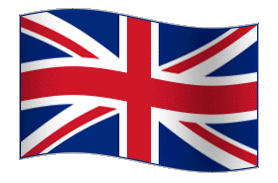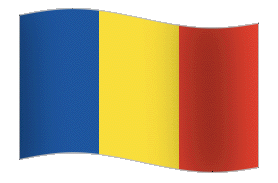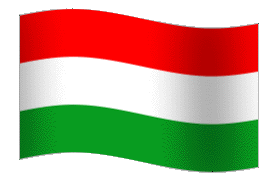 ![]()   The statue of the Holy Trinity is considered to be the most outstanding monument of Baroque art creation in Timişoara. Presumably (based on stylistic analogies with other works) it is a creation of Viennese sculptor Georg Raphael Donner. It was commissioned by counselor Anton Deschan von Hansen. It was brought to Timişoara from Vienna in 1740. The motivation for the monument (which must have cost a large sum for a city that was still far from prosperity) was the commemoration of the capital problems that had hit Timişoara during the war with the Turks from 1737 to 1739. Such monuments are very common during the Baroque period in the Catholic areas of Austria and southern Germany. The monument’s base is a pedestal with three sides; on each side there are figurative reliefs representing in Baroque manner plague, famine and war. On the pedestal’s corners, namely on consoles supported on volutes, are statues of the saints Rochus, Sebastian (the one with the arrow) and Karl Borromeus. Following is a column in itself; at its base St. Ioan of Nepomuk is represented, and below it there is St. Rozalia. At the same height as St. Nepomuk, but on the other sides of the column, there are King David and St. Barbara. The column ends with an Ionic capital, on which the Holy Trinity thrones. This statue was placed somewhere else in the beginning, too; in fact, it would not have been possible for it to be placed here since in 1740 Unirii Square was still a far from finished construction site. The statue of the Holy Trinity is considered to be the most outstanding monument of Baroque art creation in Timişoara. Presumably (based on stylistic analogies with other works) it is a creation of Viennese sculptor Georg Raphael Donner. It was commissioned by counselor Anton Deschan von Hansen. It was brought to Timişoara from Vienna in 1740. The motivation for the monument (which must have cost a large sum for a city that was still far from prosperity) was the commemoration of the capital problems that had hit Timişoara during the war with the Turks from 1737 to 1739. Such monuments are very common during the Baroque period in the Catholic areas of Austria and southern Germany. The monument’s base is a pedestal with three sides; on each side there are figurative reliefs representing in Baroque manner plague, famine and war. On the pedestal’s corners, namely on consoles supported on volutes, are statues of the saints Rochus, Sebastian (the one with the arrow) and Karl Borromeus. Following is a column in itself; at its base St. Ioan of Nepomuk is represented, and below it there is St. Rozalia. At the same height as St. Nepomuk, but on the other sides of the column, there are King David and St. Barbara. The column ends with an Ionic capital, on which the Holy Trinity thrones. This statue was placed somewhere else in the beginning, too; in fact, it would not have been possible for it to be placed here since in 1740 Unirii Square was still a far from finished construction site.
TO CLAIM THIS VIRTUAL PLEASE TAKE A FOTO IN FRONT OF THE MONUMENT WITH YOU OR A PERSONAL ITEM AND UPLOAD IT WITH YOUR LOG!
  Statuia Sfintei Treimi este poziţionată în mijlocul Pieţei Unirii; este considerată a fi cel mai reuşit monument de arta plastică barocă din Timişoara. Se bănuieşte (pe baza analogiilor stilistice cu alte lucrări) că este o creaţie a sculptorului vienez Georg Raphael Donner. Comanditarul a fost consilierul Anton Deschan von Hansen. A fost adusă la Timişoara de la Viena în 1740. Motivaţia monumentului (care trebuie să fi costat o sumă mare, într-un oraş care era încă departe de prosperitate) era comemorarea problemelor capitale ce loviseră Timişoara în timpul războiului cu turcii din 1737-1739. Asemenea monumente sunt foarte des întâlnite în perioada barocă în spaţiul catolic din Austria şi sudul Germaniei. Baza monumentului este un soclu cu trei laturi; pe fiecare latură se află reliefuri figurative reprezentând într-o manieră barocă epidemia de ciumă, foametea şi războiul. Pe colţurile soclulului – mai exact pe console sprijinte pe volute, sunt postate statui ale sfinţilor Rochus, Sebastian (cel cu săgeata) şi Karl Borromeus. Urmează o coloana în sine; la baza ei se află reprezentat Sf. Ioan de Nepomuk, sub el se află Sf. Rozalia. La aceeaşi înălţime cu Sf. Nepomuk, însă pe celelalte laturi ale coloanei, se află regele David şi Sf. Barbara. Coloana se termină cu un capitel ionic, pe care tronează Sfânta Treime. Nici această statuie nu şi-a avut locul aici de la bun început; de fapt nici nu ar fi fost posibil, căci la 1740 Piaţa Unirii era încă un şantier, departe de a fi terminat. Statuia Sfintei Treimi este poziţionată în mijlocul Pieţei Unirii; este considerată a fi cel mai reuşit monument de arta plastică barocă din Timişoara. Se bănuieşte (pe baza analogiilor stilistice cu alte lucrări) că este o creaţie a sculptorului vienez Georg Raphael Donner. Comanditarul a fost consilierul Anton Deschan von Hansen. A fost adusă la Timişoara de la Viena în 1740. Motivaţia monumentului (care trebuie să fi costat o sumă mare, într-un oraş care era încă departe de prosperitate) era comemorarea problemelor capitale ce loviseră Timişoara în timpul războiului cu turcii din 1737-1739. Asemenea monumente sunt foarte des întâlnite în perioada barocă în spaţiul catolic din Austria şi sudul Germaniei. Baza monumentului este un soclu cu trei laturi; pe fiecare latură se află reliefuri figurative reprezentând într-o manieră barocă epidemia de ciumă, foametea şi războiul. Pe colţurile soclulului – mai exact pe console sprijinte pe volute, sunt postate statui ale sfinţilor Rochus, Sebastian (cel cu săgeata) şi Karl Borromeus. Urmează o coloana în sine; la baza ei se află reprezentat Sf. Ioan de Nepomuk, sub el se află Sf. Rozalia. La aceeaşi înălţime cu Sf. Nepomuk, însă pe celelalte laturi ale coloanei, se află regele David şi Sf. Barbara. Coloana se termină cu un capitel ionic, pe care tronează Sfânta Treime. Nici această statuie nu şi-a avut locul aici de la bun început; de fapt nici nu ar fi fost posibil, căci la 1740 Piaţa Unirii era încă un şantier, departe de a fi terminat.
PENTRU A LOGA ACEST VIRTUAL TE ROG SĂ FACI O POZĂ CU TINE SAU CU UN OBIECT PERSONAL ÎN FAȚA MONUMENTUL ȘI ÎNCĂRCAȚI-O ÎN LOG!
  A Szentháromság-oszlop , más néven a Pestisoszlop műemlék Temesvár központjában helyezkedik el. Köztudottan a város egyik legismertebb és legeredményesebb barokk emlékműve. Gyanítják, hogy a bécsi szobrász, Georg Raphael Donner munkája. A megbízója pedig Anton Deschan von Hansen tanácsos volt. Az emlékművet Bécsből Temesvárra szállítják 1740-ben. Fő inspirációja, a város törökökkel folytatott háború során komoly problémákról való megemlékezés (1737-1739). Az ilyen fajta emlékművek a barokk időszak alatt rendkívül jellemzőek voltak, főként Ausztria és a Dél-Németországi térségben. Az emlékmű alapja egy háromoldalas aljzat; mindkét oldalon van ábrás megkönnyebbülés, amely barokk módon ábrázolja a pestist, az éhínséget és a háborút. A Rochus, Sebastian (a nyíllal rendelkező) szentek és Karl Borromeus szobrok a foglalat sarkaiban helyezkednek el - pontosabban a csigavonallal támogatott konzolokon. Ennek tövében Nepomuki Szent János található, alatta pedig Szent Rozália. Ugyanabban a magasságban, mint a Szent Nepomuk, de az oszlop másik oldalán Dávid király és Szent Barbara található. Az oszlop egy ionos oszlopfőben végződik, amelyen a Szentháromság áll. Ez a szobor sem volt itt a kezdetektől fogva; valójában nem lett volna lehetséges, mert 1740-ben a Főtér még egy udvar volt, amely messze nem volt befejezve. A Szentháromság-oszlop , más néven a Pestisoszlop műemlék Temesvár központjában helyezkedik el. Köztudottan a város egyik legismertebb és legeredményesebb barokk emlékműve. Gyanítják, hogy a bécsi szobrász, Georg Raphael Donner munkája. A megbízója pedig Anton Deschan von Hansen tanácsos volt. Az emlékművet Bécsből Temesvárra szállítják 1740-ben. Fő inspirációja, a város törökökkel folytatott háború során komoly problémákról való megemlékezés (1737-1739). Az ilyen fajta emlékművek a barokk időszak alatt rendkívül jellemzőek voltak, főként Ausztria és a Dél-Németországi térségben. Az emlékmű alapja egy háromoldalas aljzat; mindkét oldalon van ábrás megkönnyebbülés, amely barokk módon ábrázolja a pestist, az éhínséget és a háborút. A Rochus, Sebastian (a nyíllal rendelkező) szentek és Karl Borromeus szobrok a foglalat sarkaiban helyezkednek el - pontosabban a csigavonallal támogatott konzolokon. Ennek tövében Nepomuki Szent János található, alatta pedig Szent Rozália. Ugyanabban a magasságban, mint a Szent Nepomuk, de az oszlop másik oldalán Dávid király és Szent Barbara található. Az oszlop egy ionos oszlopfőben végződik, amelyen a Szentháromság áll. Ez a szobor sem volt itt a kezdetektől fogva; valójában nem lett volna lehetséges, mert 1740-ben a Főtér még egy udvar volt, amely messze nem volt befejezve.
HA LOGOLNI SZERETNÉD EZT A VIRTUÁLIST, KÉRLEK KÉSZÍTS EGY FOTÓT MAGADDAL VAGY EGY SZEMÉLYES TÁRGGYAL AZ EMLÉKMŰ ELŐTT ÉS TÖLTSD FEL A LOGODBAN!
Virtual Reward - 2019/2020
 This Virtual Cache is part of a limited release of Virtuals created between June 4, 2019 and June 4, 2020. Only 4,000 cache owners were given the opportunity to hide a Virtual Cache. Learn more about Virtual Rewards 2.0 on the Geocaching Blog This Virtual Cache is part of a limited release of Virtuals created between June 4, 2019 and June 4, 2020. Only 4,000 cache owners were given the opportunity to hide a Virtual Cache. Learn more about Virtual Rewards 2.0 on the Geocaching Blog
|